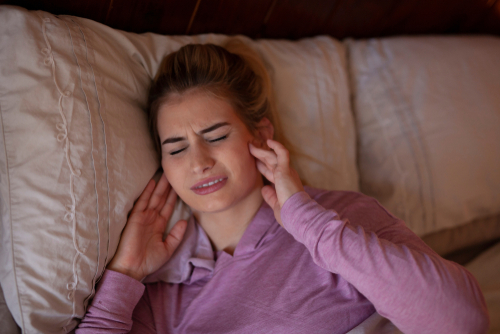You take a bite of your favorite sandwich, expecting to enjoy it—until a sharp pain shoots through your jaw. You try to yawn, but your jaw clicks and tightens. The discomfort lingers, making even the simplest moments unbearable. This is life with temporomandibular disorder (TMD), a condition that affects the temporomandibular joints (TMJs). TMJs are the two hinge-like joints that connect your lower jaw to your skull. They are located just in front of each ear. These joints are essential for everyday functions like chewing, speaking, and even yawning. If this pain feels all too familiar, orthodontic treatment for TMJ disorders may help alleviate your discomfort.
The Basics of TMJ Disorders
Living with TMJ disorder, clinically known as TMD, can be both painful and disruptive to your daily life. An estimated 11 to 12 million adults in the United States experience pain in the TMJ region, highlighting just how common these disorders are.
TMD is categorized into three main types: disorders of the jaw joints, disorders of the chewing (or masticatory) muscles, and headaches associated with TMD. While a jaw injury can contribute to the condition, the exact cause remains unclear in most cases.
Common symptoms of TMD include pain or tenderness in the jaw, clicking, popping, or grating sounds in the jaw, difficulty chewing or limited jaw movement, headaches, earaches, neck pain, and locking of the jaw.
We often find that patients with TMD also exhibit bruxism—the involuntary clenching or grinding of teeth. Bruxism typically happens at night while you sleep, but some people also clench or grind their teeth during the day. While bruxism and TMD are closely linked, bruxism may not be a direct symptom of TMD.
What’s the Relationship Between Bruxism and TMJ Disorder?
 If you or your child are living with TMD, you may have noticed other habits or symptoms, like clenching or grinding. It’s natural to wonder: Are these two conditions connected? And could bruxism be making your jaw pain worse?
If you or your child are living with TMD, you may have noticed other habits or symptoms, like clenching or grinding. It’s natural to wonder: Are these two conditions connected? And could bruxism be making your jaw pain worse?
The relationship between bruxism and TMD is complex and still debated among dental professionals. Having one doesn’t automatically mean you’ll develop the other. However, for some people, these conditions can influence each other. Shared risk factors—like stress or sleep problems—may cause them to happen at the same time.
Some studies, particularly those with small sample sizes, have found a high prevalence of bruxism in patients with TMD, especially those experiencing myofascial pain or disc displacement.
While some research suggests that teeth grinding might make TMD symptoms worse, other studies have found no clear cause-and-effect connection between the two. So why does this matter to you?
Understanding how these conditions may overlap can help you and your care team better manage your symptoms. If bruxism is contributing to your discomfort, recognizing the habit is the first step toward finding relief. This is why a comprehensive approach—including evaluating teeth-grinding behaviors—is helpful when treating TMD.
At Orthodontists Associates of Western New York, we look at the full picture. We realize that TMD is a challenging condition to live with, and we see many patients looking for ways to ease their symptoms. While some instances of TMD resolve on their own, others require comprehensive care. In these cases, we may recommend specialized orthodontic treatment for TMJ disorders to help relieve discomfort and enhance your quality of life.
How Orthodontic Treatment for TMJ Disorders Can Help
Orthodontic treatment for TMD can help alleviate symptoms, especially when the disorder is linked to bite misalignment or jaw positioning. Treatments such as braces or clear aligners can realign the teeth and improve bite function, reducing uneven pressure on the TMJ and alleviating pain and dysfunction.
In some cases, orthodontic appliances like splints or night guards can help reposition the jaw into a healthier alignment. These devices help reduce strain on the joint and improve overall functionality.
Correcting misaligned teeth can also address habits like bruxism, which can increase stress on the TMJ. By improving your bite and balancing the surrounding muscles, orthodontic treatment can help reduce grinding, minimize jaw tension, and support long-term relief from TMJ symptoms.
However, TMD is a complex condition, so it’s important to recognize that there may not be a one-size-fits-all solution. A comprehensive evaluation by one of our specialists is essential to determine the best course of treatment for you.
Discover If Orthodontic Treatment for TMJ Disorders Can Help You
Living with TMD can be painful and frustrating, but you don’t have to endure it alone. Orthodontic treatment may offer a path to relief by addressing underlying issues like bite misalignment and jaw positioning. Whether through braces, aligners, or specialized appliances, the right treatment can help restore balance to your jaw, reduce discomfort, and improve your overall quality of life.
If you’re struggling with TMJ-related pain, schedule a free screening with Orthodontists Associates of Western New York. Our specialists are here to help you find a treatment plan tailored to your needs, so you can get back to enjoying life, pain-free.

